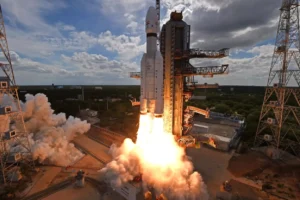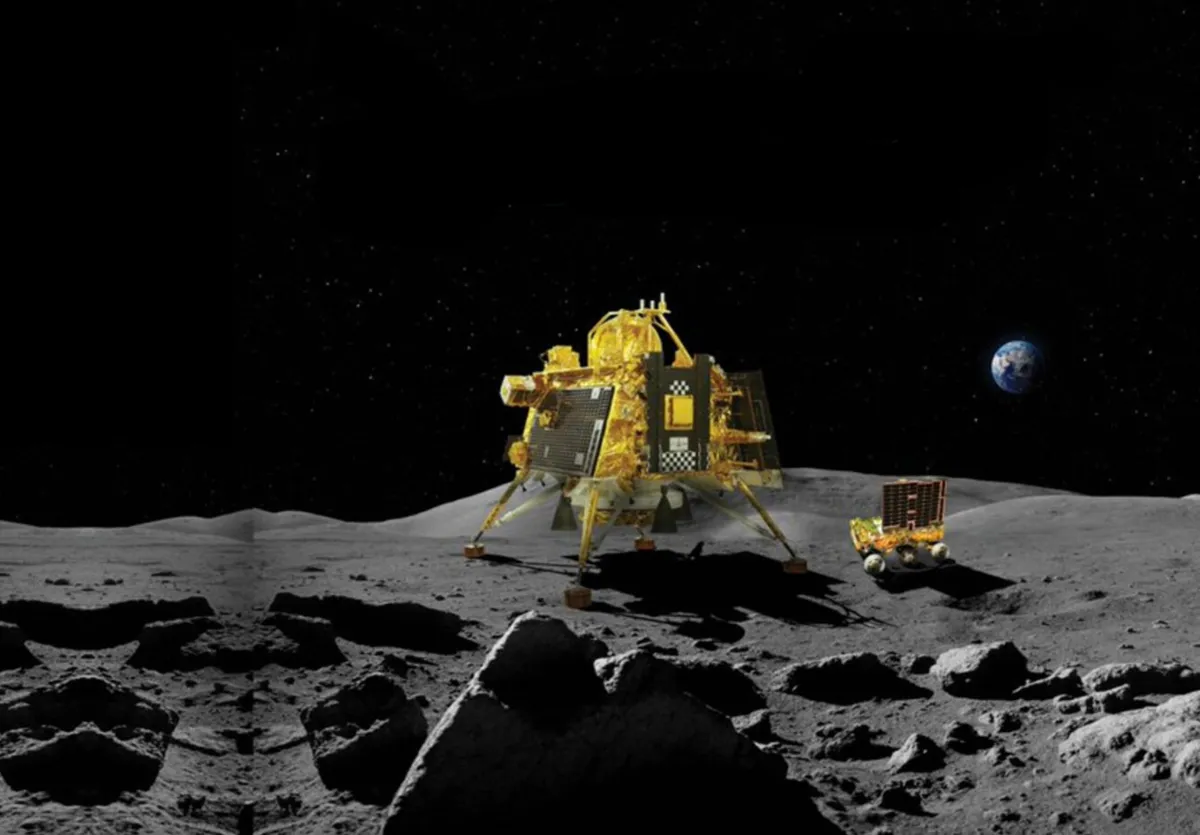India’s Space. 2023 was India’s big year in space. They made a splash by landing Chandrayaan-3 in the Moon’s south pole, a spot no one had ever reached before. Joining the USA, former Soviet Union, and China, India made it to the Moon’s surface, and the country went wild with celebrations.
An Epic Lunar Journey
It was a nail-biting “20 minutes of terror” for the folks at the Indian Space Research Organisation (Isro) as their Vikram lander, carrying the Pragyaan rover, descended to the Moon. Gradually slowing from 1.68km per second to almost zero, it made a soft landing in a tough spot, full of craters and boulders at the south pole.
“India is on the Moon!” announced a proud Isro chief S Somanath, marking a historic moment. For the next 10 days, everyone held their breath, tracking every move of the rover and lander, eagerly awaiting data and images from the lunar surface.
The rover, at a speed of 1cm per second, covered over 100m and smartly navigated around craters. Its findings, like temperature differences above and below the lunar surface and the discovery of various chemicals, thrilled the scientific community.

Isro boasted that Vikram’s
Isro boasted that Vikram’s “hop experiment” was a highlight. By firing its engines, the lander lifted about 40cm and landed around 30-40cm away, proving its potential for future missions like bringing back samples or carrying humans.
In a recent update, Isro shared that the propulsion module, which separated from Vikram near the Moon, successfully re-entered Earth’s orbit after some tricky maneuvers. This achievement holds significance for Isro’s plans for sample returns or astronaut missions.
Peeking at the Sun
Soon after the Moon feat, India launched Aditya-L1, its maiden mission to observe the Sun. Set on a four-month journey covering 1.5 million km, Aditya aims to reach Lagrange point 1, where gravitational forces balance between the Sun and Earth, allowing it to “hover.”
Named after the Hindu god of the Sun, Aditya will orbit the Sun in sync with Earth. With seven scientific instruments on board, it’ll study the solar corona, photosphere, and chromosphere, aiding in understanding solar activity and its impact on Earth’s weather.
Gaganyaan: Quest for Return
India set off the Gaganyaan spacecraft, marking the beginning of a series of tests for their planned astronaut mission in 2025. Their immediate goal: to safely send Indians into space and back.
The test flight in October focused on the crew’s safety in case of rocket malfunctions. After the rocket soared about 12km, abort systems kicked in, deploying parachutes for a safe splashdown in the Bay of Bengal, recovered by the Indian navy.
Isro’s plan includes sending a humanoid robot before astronauts, ensuring a smooth journey to space and back.
In a nutshell, 2023 was India’s year of space triumphs—touching the Moon’s surface, peeking at the Sun, and gearing up for astronauts’ safe return from space.



